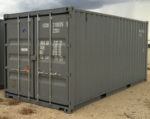
Alex Mills
By Alex Mills
President Obama’s Clean Power Plan is headed to the U.S. Supreme Court in an unusual move that will bypass the U.S. Court of Appeals for the D.C. Circuit.
The court’s move is another twist in a case that has defied the traditional legal track. With emergency requests streaming in from a swarm of states, utilities, and other stakeholders, the Supreme Court made an unprecedented decision in February to step in and freeze the Clean Power Plan during D.C. Circuit review.
The issue has to be of extreme importance for the Supreme Court to take this unusual step.
Opponents of the plan to cut carbon emissions from the power sector say the court’s decision is evidence of judicial skepticism toward the rule. While EPA has said that the Clean Power Plan is just another Clean Air Act, the Court’s actions seem to indicate that is not the case.
The Clean Power Plan was adopted by the Environmental Protection Agency on Aug. 3, 2015. It will implement more stringent regulations on the emissions that are believed to contribute to global warming.
The final version of the plan aims to reduce carbon dioxide emissions from electrical power generation by 32 percent within 15 years relative to 2005 levels.
The plan will require individual states to meet specific standards with respect to reduction of carbon emissions. States are free to reduce emissions by various means, and must submit emissions reductions plans by September 2016, or, with an extension approval, by September 2018. If a state has not submitted a plan by then, the EPA will impose its own plan on that state.
The EPA divided the country into three regions based on connected regional electricity grids to determine a state’s goal. States are to implement their plans by focusing on three building blocks: increasing the generation efficiency of existing fossil fuel plants, substituting lower carbon dioxide emitting natural gas generation for coal powered generation, and substituting generation from new zero carbon dioxide emitting renewable sources for fossil fuel powered generation.
States may use regionally available low carbon generation sources when substituting for in-state coal generation and coordinate with other states to develop multi-state plans.
The EPA decided in 2014 that the Clean Air Act is ambiguous, and it decided to develop new air emission regulations for power plants that are more restrictive on fossil fuels that generate electricity.
Twenty-seven states asked the D.C. Court of Appeals for an emergency stay to prevent implementation. They argued that EPA overstepped its legal authority. The Supreme Court on Feb. 9 ordered EPA to stop enforcement until the lower court rules. Last week, the Supreme Court decided to hear the case on Sept. 27.
Alex Mills is President of the Texas Alliance of Energy Producers. The opinions expressed are solely of the author.


















These plans are like cutting a finger off to see if your hand will work better, I hope common sense rears it’s head for this.